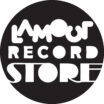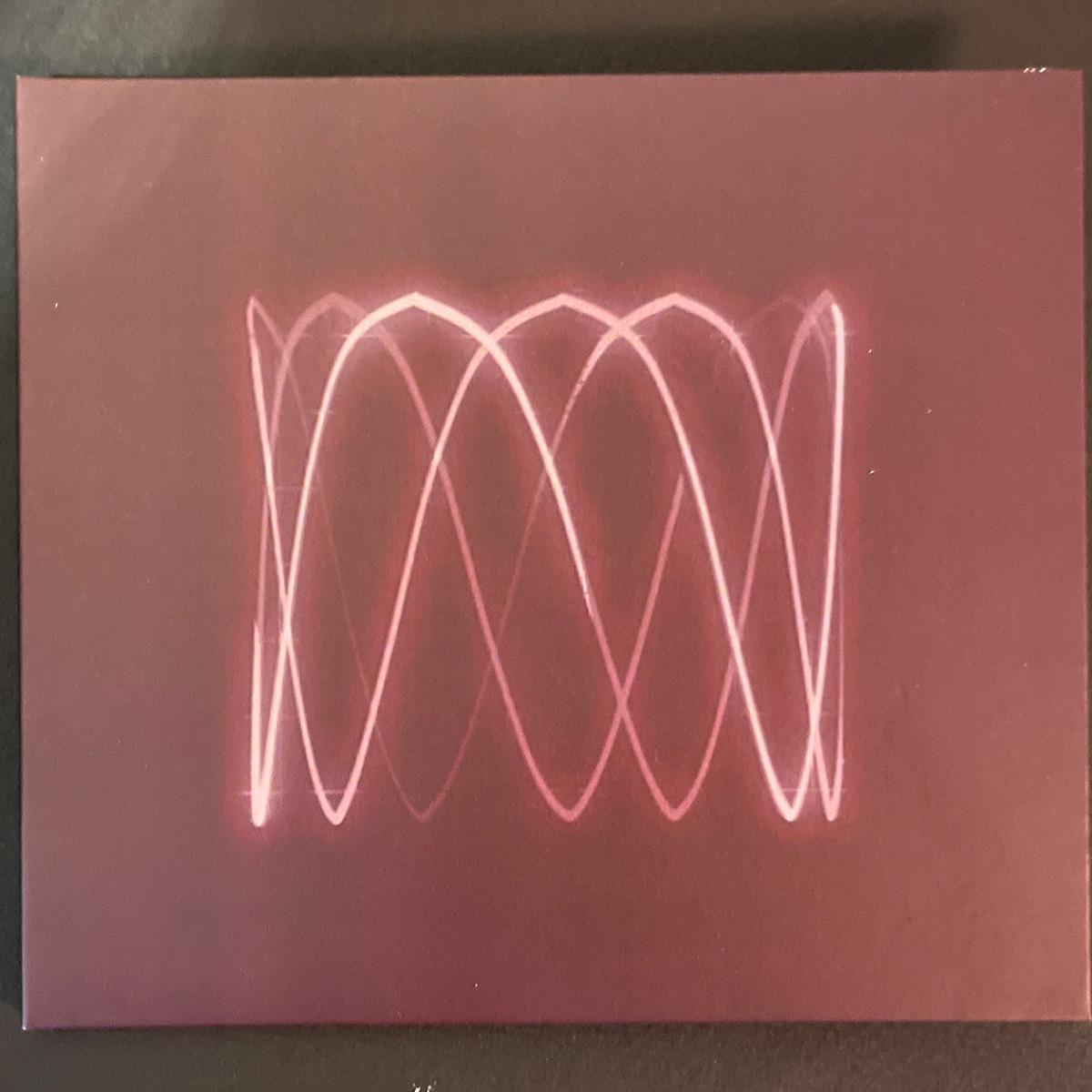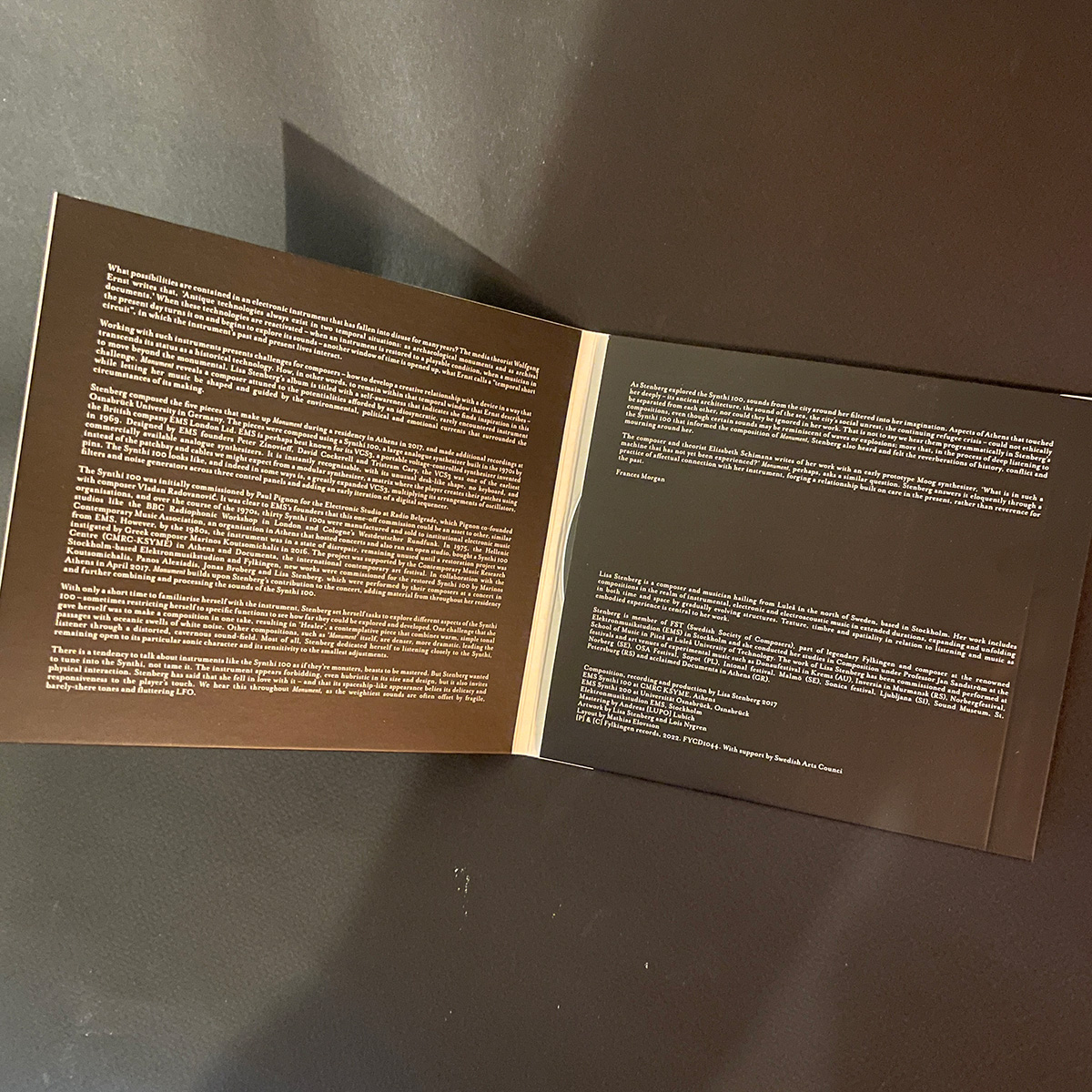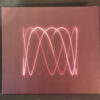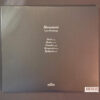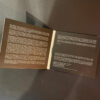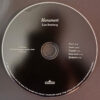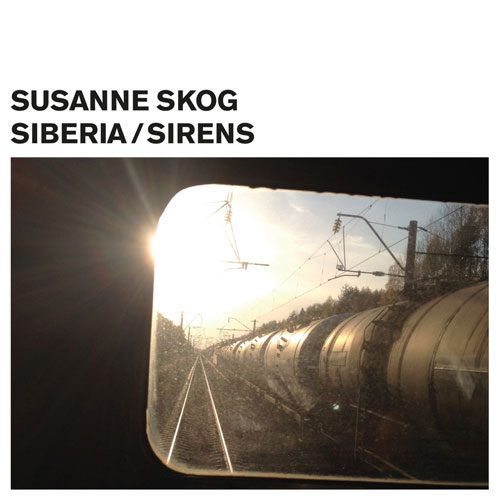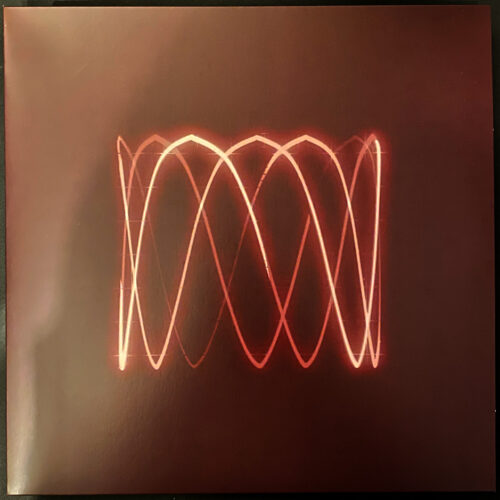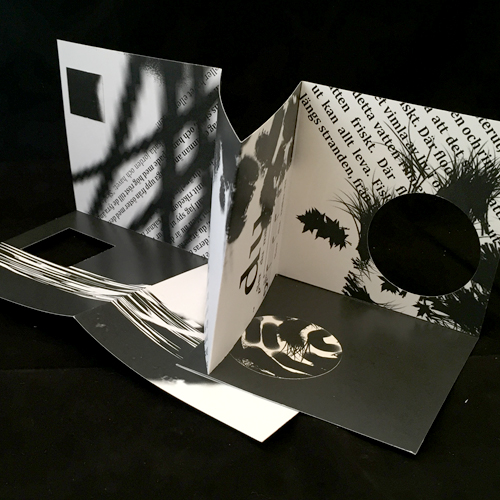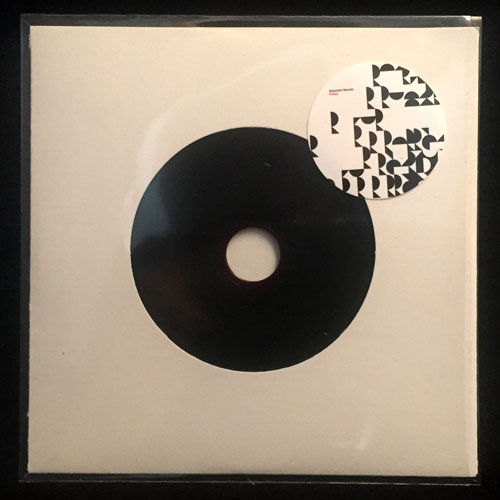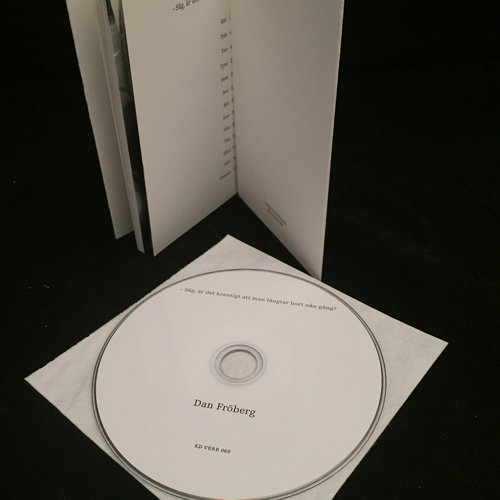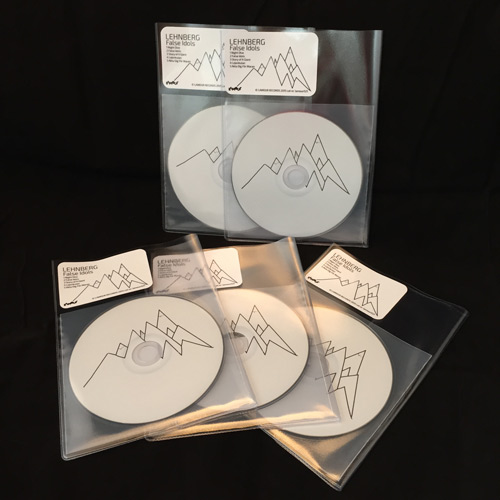Artist: Lisa Stenberg
Title: Monument
Label: Fylkingen Records
Cat nr: FYCD 1044
Format: CD
Style: Sound art/Drone/Modern classical
Tracklist
| 1 | Heart | 13:13 | |
| 2 3 |
Healer Oracular |
9:30
3:55 |
|
| 4 | Monument | 14:54 | |
| 5 | Epithymia | 9:05 |
Reverberating through time: notes on Monument
What possibilities are contained in an electronic instrument that has fallen into disuse for many years? The media theorist Wolfgang Ernst writes that, ‘Antique technologies always exist in two temporal situations: as archaeological monuments and as archival documents.’ When these technologies are reactivated – when an instrument is restored to a playable condition, when a musician in the present day turns it on and begins to explore its sounds – another window of time is opened up, what Ernst calls a “temporal short circuit”, in which the instrument’s past and present lives interact.
Working with such instruments presents challenges for composers – how to develop a creative relationship with a device in a way that transcends its status as a historical technology. How, in other words, to remain within that temporal window that Ernst describes – to move beyond the monumental. Lisa Stenberg’s album is titled with a self-awareness that indicates she finds inspiration in this challenge. Monument reveals a composer attuned to the potentialities afforded by an idiosyncratic, rarely encountered instrument while letting her music be shaped and guided by the environmental, political and emotional currents that surrounded the circumstances of its making.
Stenberg composed the five pieces that make up Monument during a residency in Athens in 2017, and made additional recordings at Osnabrück University in Germany. The pieces were composed using a Synthi 100, a large analogue synthesizer built in the 1970s by the British company EMS London Ltd. EMS is perhaps best known for its VCS3, a portable voltage-controlled synthesizer invented in 1969. Designed by EMS founders Peter Zinovieff, David Cockerell and Tristram Cary, the VCS3 was one of the earliest commercially available analogue synthesizers. It is instantly recognisable, with its unusual desk-like shape, no keyboard, and instead of the patchbay and cables we might expect from a modular synthesizer, a matrix where the player creates their patches using pins. The Synthi 100 looks like, and indeed in some ways is, a greatly expanded VCS3, multiplying its arrangements of oscillators, filters and noise generators across three control panels and adding an early iteration of a digital sequencer.
The Synthi 100 was initially commissioned by Paul Pignon for the Electronic Studio at Radio Belgrade, which Pignon co-founded with composer Vladan Radovanović. It was clear to EMS’s founders that this one-off commission could be an asset to other, similar organisations, and over the course of the 1970s, thirty Synthi 100s were manufactured and sold to institutional electronic music studios like the BBC Radiophonic Workshop in London and Cologne’s Westdeutscher Rundfunk. In 1975, the Hellenic Contemporary Music Association, an organisation in Athens that hosted concerts and also ran an open studio, bought a Synthi 100 from EMS. However, by the 1980s, the instrument was in a state of disrepair, remaining unused until a restoration project was instigated by Greek composer Marinos Koutsomichalis in 2016. The project was supported by the Contemporary Music Research Centre (CMRC-KSYME) in Athens and Documenta, the international contemporary art festival. In collaboration with the Stockholm-based Elektronmusikstudion and Fylkingen, new works were commissioned for the restored Synthi 100 by Marinos Koutsomichalis, Panos Alexiadis, Jonas Broberg and Lisa Stenberg, which were performed by their composers at a concert in Athens in April 2017. Monument builds upon Stenberg’s contribution to the concert, adding material from throughout her residency and further combining and processing the sounds of the Synthi 100.With only a short time to familiarise herself with the instrument, Stenberg set herself tasks to explore different aspects of the Synthi 100 – sometimes restricting herself to specific functions to see how far they could be explored and developed. One challenge that she gave herself was to make a composition in one take, resulting in ‘Healer’, a contemplative piece that combines warm, simple tonal passages with oceanic swells of white noise. Other compositions, such as ‘Monument’ itself, are denser, more dramatic, leading the listener through a distorted, cavernous sound-field. Most of all, Stenberg dedicated herself to listening closely to the Synthi, remaining open to its particular sonic character and its sensitivity to the smallest adjustments.
There is a tendency to talk about instruments like the Synthi 100 as if they’re monsters, beasts to be mastered. But Stenberg wanted to tune into the Synthi, not tame it. The instrument appears forbidding, even hubristic in its size and design, but it also invites physical interaction. Stenberg has said that she fell in love with it – and that its spaceship-like appearance belies its delicacy and responsiveness to the player’s touch. We hear this throughout Monument, as the weightiest sounds are often offset by fragile, barely-there tones and fluttering LFO.
As Stenberg explored the Synthi 100, sounds from the city around her filtered into her imagination. Aspects of Athens that touched her deeply – its ancient architecture, the sound of the sea, the city’s social unrest, the continuing refugee crisis – could not ethically be separated from each other, nor could they be ignored in her work. That is not to say we hear them programmatically in Stenberg’s compositions, even though certain sounds may be reminiscent of waves or explosions; more that, in the process of deep listening to the Synthi 100 that informed the composition of Monument, Stenberg also heard and felt the reverberations of history, conflict and mourning around her.
The composer and theorist Elisabeth Schimana writes of her work with an early prototype Moog synthesizer, ‘What is in such a machine that has not yet been experienced?’ Monument, perhaps, asks a similar question. Stenberg answers it eloquently through a practice of affectual connection with her instrument, forging a relationship built on care in the present, rather than reverence for the past.
/Frances MorganLisa Stenberg is a composer and musician hailing from Luleå in the north of Sweden, based in Stockholm. Her work includes compositions in the realm of instrumental, electronic and electroacoustic music in extended durations, expanding and unfolding in both time and space by gradually evolving structures. Texture, timbre and spatiality in relation to music as embodied experience is central to her work.Stenberg is member of FST (Swedish Society of Composers), part of legendary Fylkingen and composer at the renowned Elektronmusikstudion EMS in Stockholm, and conducted her studies in Composition under Professor Jan Sandström at the School of Music in Piteå at Luleå University of Technology. The work of Lisa Stenberg has been commissioned and performed at festivals and art venues of experimental music such as Donaufestival in Krems (AU), Inversia in Murmansk (RS), Norbergfestival, Norberg (SE), OSA Festival, Sopot (PL), Intonal festival, Malmö (SE), Sonica festival, Ljubljana (SI), Sound Museum, St. Petersburg (RS) and highly acclaimed Documenta in Athens (GR).Composition, recording and production by Lisa Stenberg 2017
EMS Synthi 100 at CMRC KSYME, Athens
EMS Synthi 200 at Universität Osnabrück, Osnabrück
Elektronmusikstudion EMS, Stockholm
Mastering by Andreas [LUPO] Lubich
Artwork by Lisa Stenberg and Lois Nygren
Layout by Mathias Elovsson
Liner note by Frances Morgan
The music on the LP is a shortened version of the album adapted for the vinyl medium
What possibilities are contained in an electronic instrument that has fallen into disuse for many years? The media theorist Wolfgang Ernst writes that, ‘Antique technologies always exist in two temporal situations: as archaeological monuments and as archival documents.’ When these technologies are reactivated – when an instrument is restored to a playable condition, when a musician in the present day turns it on and begins to explore its sounds – another window of time is opened up, what Ernst calls a “temporal short circuit”, in which the instrument’s past and present lives interact.
Working with such instruments presents challenges for composers – how to develop a creative relationship with a device in a way that transcends its status as a historical technology. How, in other words, to remain within that temporal window that Ernst describes – to move beyond the monumental. Lisa Stenberg’s album is titled with a self-awareness that indicates she finds inspiration in this challenge. Monument reveals a composer attuned to the potentialities afforded by an idiosyncratic, rarely encountered instrument while letting her music be shaped and guided by the environmental, political and emotional currents that surrounded the circumstances of its making.
Stenberg composed the five pieces that make up Monument during a residency in Athens in 2017, and made additional recordings at Osnabrück University in Germany. The pieces were composed using a Synthi 100, a large analogue synthesizer built in the 1970s by the British company EMS London Ltd. EMS is perhaps best known for its VCS3, a portable voltage-controlled synthesizer invented in 1969. Designed by EMS founders Peter Zinovieff, David Cockerell and Tristram Cary, the VCS3 was one of the earliest commercially available analogue synthesizers. It is instantly recognisable, with its unusual desk-like shape, no keyboard, and instead of the patchbay and cables we might expect from a modular synthesizer, a matrix where the player creates their patches using pins. The Synthi 100 looks like, and indeed in some ways is, a greatly expanded VCS3, multiplying its arrangements of oscillators, filters and noise generators across three control panels and adding an early iteration of a digital sequencer.
The Synthi 100 was initially commissioned by Paul Pignon for the Electronic Studio at Radio Belgrade, which Pignon co-founded with composer Vladan Radovanović. It was clear to EMS’s founders that this one-off commission could be an asset to other, similar organisations, and over the course of the 1970s, thirty Synthi 100s were manufactured and sold to institutional electronic music studios like the BBC Radiophonic Workshop in London and Cologne’s Westdeutscher Rundfunk. In 1975, the Hellenic Contemporary Music Association, an organisation in Athens that hosted concerts and also ran an open studio, bought a Synthi 100 from EMS. However, by the 1980s, the instrument was in a state of disrepair, remaining unused until a restoration project was instigated by Greek composer Marinos Koutsomichalis in 2016. The project was supported by the Contemporary Music Research Centre (CMRC-KSYME) in Athens and Documenta, the international contemporary art festival. In collaboration with the Stockholm-based Elektronmusikstudion and Fylkingen, new works were commissioned for the restored Synthi 100 by Marinos Koutsomichalis, Panos Alexiadis, Jonas Broberg and Lisa Stenberg, which were performed by their composers at a concert in Athens in April 2017. Monument builds upon Stenberg’s contribution to the concert, adding material from throughout her residency and further combining and processing the sounds of the Synthi 100.With only a short time to familiarise herself with the instrument, Stenberg set herself tasks to explore different aspects of the Synthi 100 – sometimes restricting herself to specific functions to see how far they could be explored and developed. One challenge that she gave herself was to make a composition in one take, resulting in ‘Healer’, a contemplative piece that combines warm, simple tonal passages with oceanic swells of white noise. Other compositions, such as ‘Monument’ itself, are denser, more dramatic, leading the listener through a distorted, cavernous sound-field. Most of all, Stenberg dedicated herself to listening closely to the Synthi, remaining open to its particular sonic character and its sensitivity to the smallest adjustments.
There is a tendency to talk about instruments like the Synthi 100 as if they’re monsters, beasts to be mastered. But Stenberg wanted to tune into the Synthi, not tame it. The instrument appears forbidding, even hubristic in its size and design, but it also invites physical interaction. Stenberg has said that she fell in love with it – and that its spaceship-like appearance belies its delicacy and responsiveness to the player’s touch. We hear this throughout Monument, as the weightiest sounds are often offset by fragile, barely-there tones and fluttering LFO.
As Stenberg explored the Synthi 100, sounds from the city around her filtered into her imagination. Aspects of Athens that touched her deeply – its ancient architecture, the sound of the sea, the city’s social unrest, the continuing refugee crisis – could not ethically be separated from each other, nor could they be ignored in her work. That is not to say we hear them programmatically in Stenberg’s compositions, even though certain sounds may be reminiscent of waves or explosions; more that, in the process of deep listening to the Synthi 100 that informed the composition of Monument, Stenberg also heard and felt the reverberations of history, conflict and mourning around her.
The composer and theorist Elisabeth Schimana writes of her work with an early prototype Moog synthesizer, ‘What is in such a machine that has not yet been experienced?’ Monument, perhaps, asks a similar question. Stenberg answers it eloquently through a practice of affectual connection with her instrument, forging a relationship built on care in the present, rather than reverence for the past.
/Frances MorganLisa Stenberg is a composer and musician hailing from Luleå in the north of Sweden, based in Stockholm. Her work includes compositions in the realm of instrumental, electronic and electroacoustic music in extended durations, expanding and unfolding in both time and space by gradually evolving structures. Texture, timbre and spatiality in relation to music as embodied experience is central to her work.Stenberg is member of FST (Swedish Society of Composers), part of legendary Fylkingen and composer at the renowned Elektronmusikstudion EMS in Stockholm, and conducted her studies in Composition under Professor Jan Sandström at the School of Music in Piteå at Luleå University of Technology. The work of Lisa Stenberg has been commissioned and performed at festivals and art venues of experimental music such as Donaufestival in Krems (AU), Inversia in Murmansk (RS), Norbergfestival, Norberg (SE), OSA Festival, Sopot (PL), Intonal festival, Malmö (SE), Sonica festival, Ljubljana (SI), Sound Museum, St. Petersburg (RS) and highly acclaimed Documenta in Athens (GR).Composition, recording and production by Lisa Stenberg 2017
EMS Synthi 100 at CMRC KSYME, Athens
EMS Synthi 200 at Universität Osnabrück, Osnabrück
Elektronmusikstudion EMS, Stockholm
Mastering by Andreas [LUPO] Lubich
Artwork by Lisa Stenberg and Lois Nygren
Layout by Mathias Elovsson
Liner note by Frances Morgan
The music on the LP is a shortened version of the album adapted for the vinyl medium

